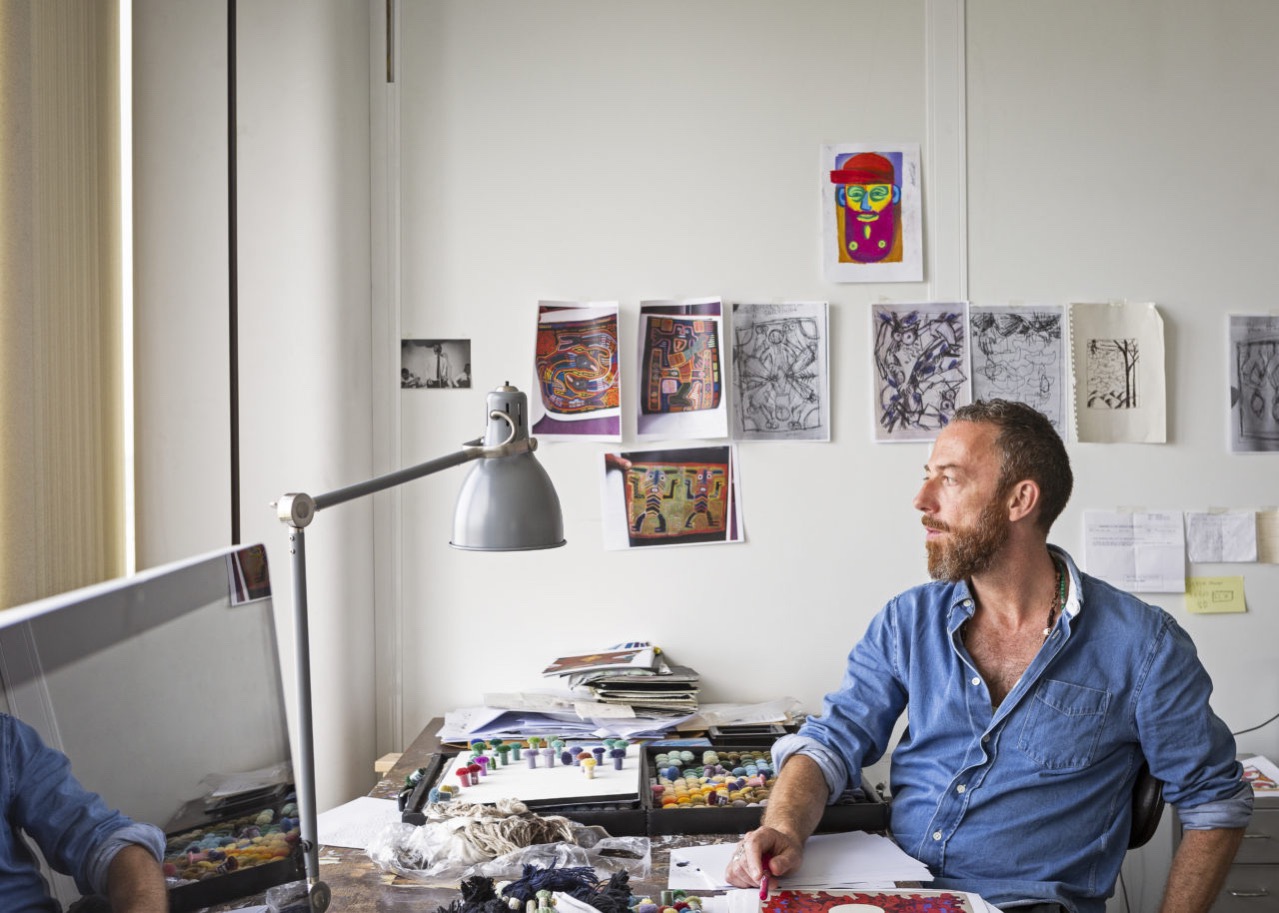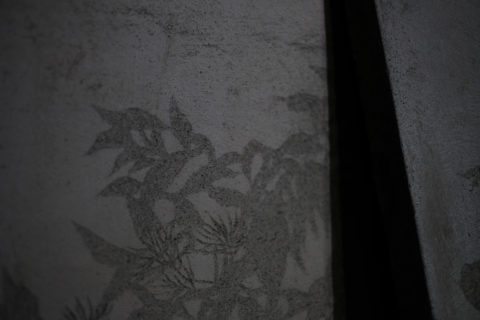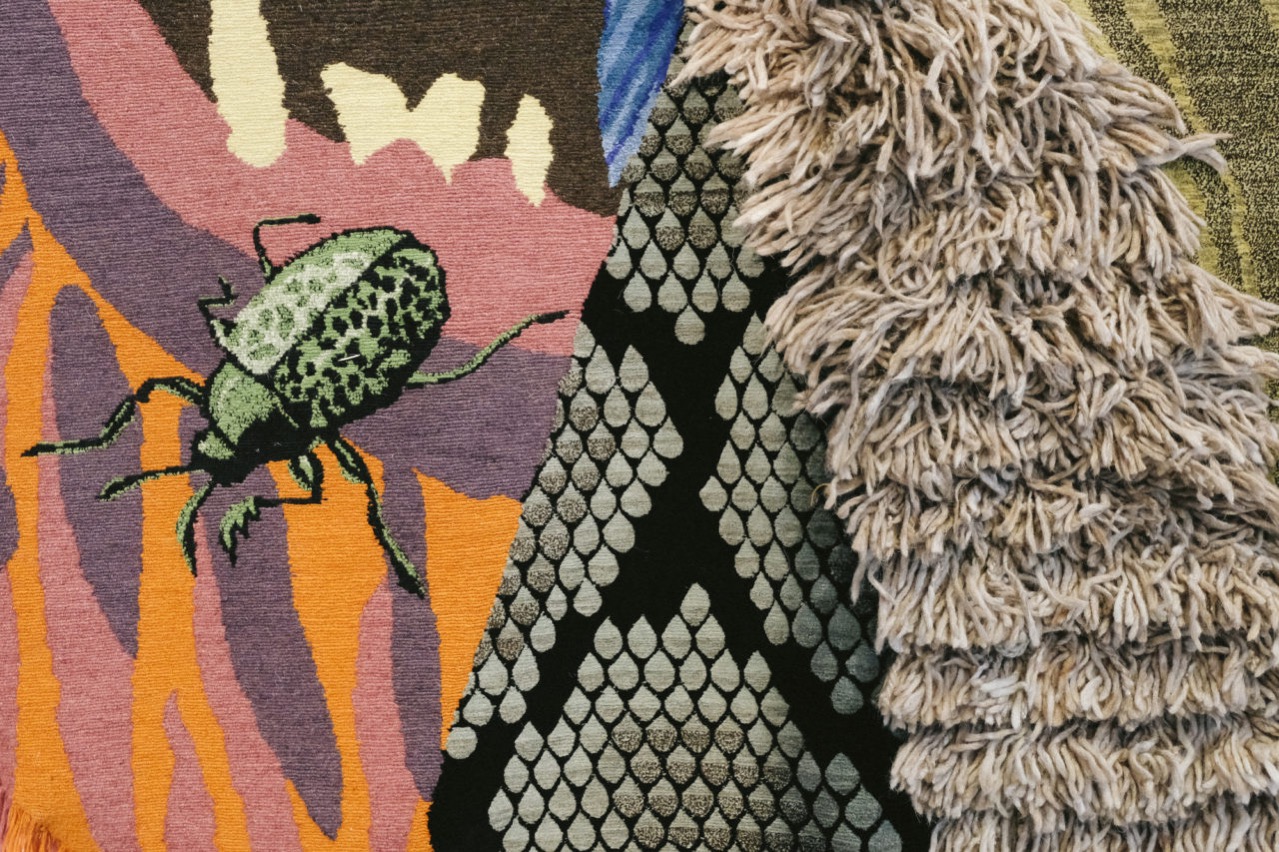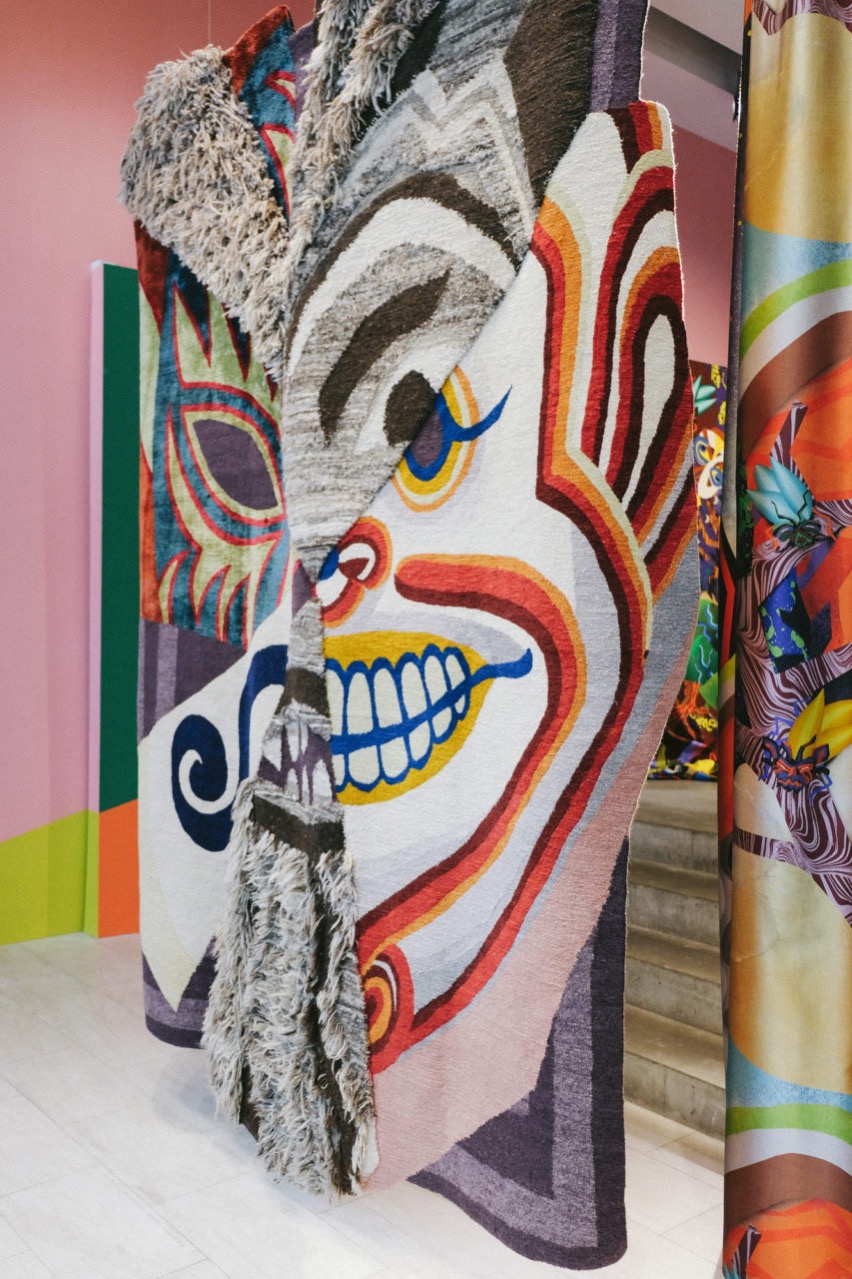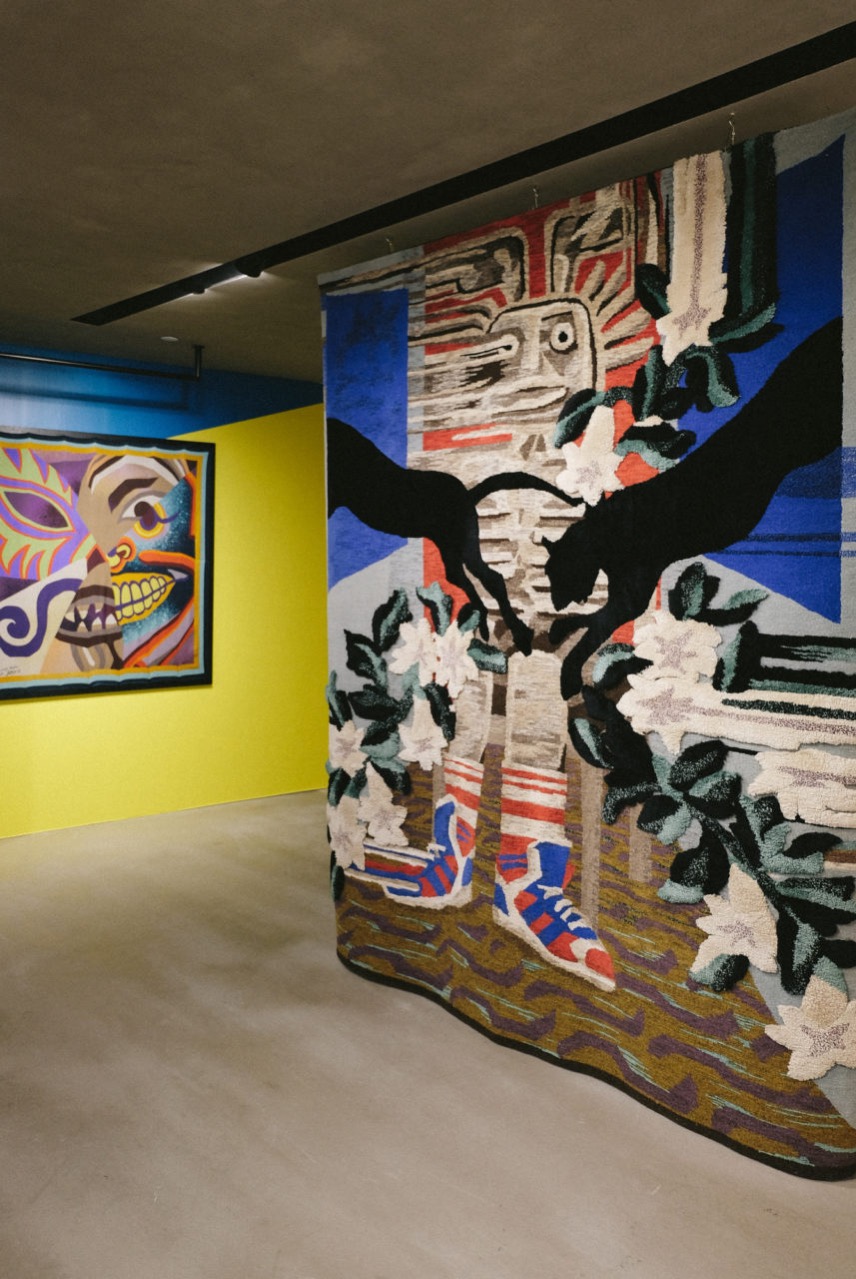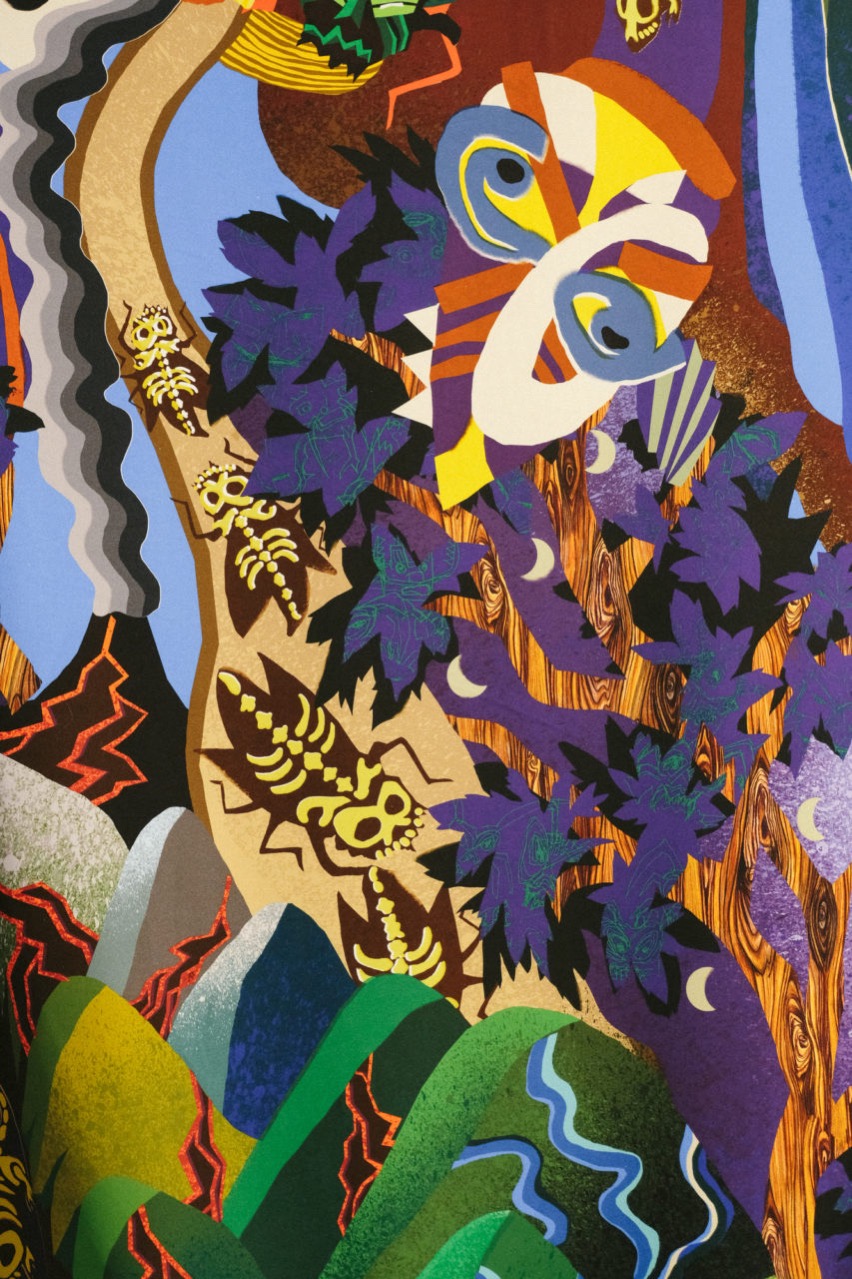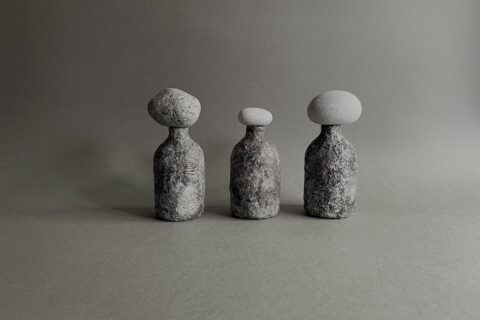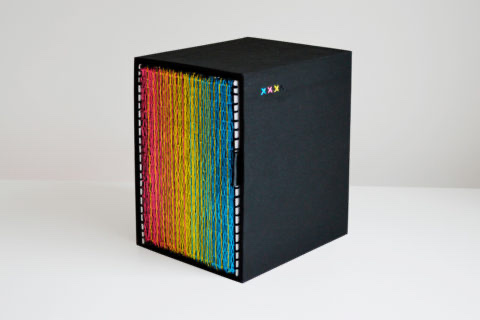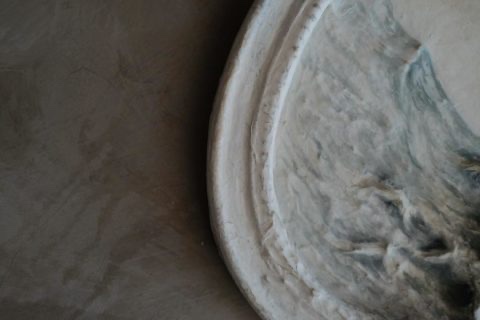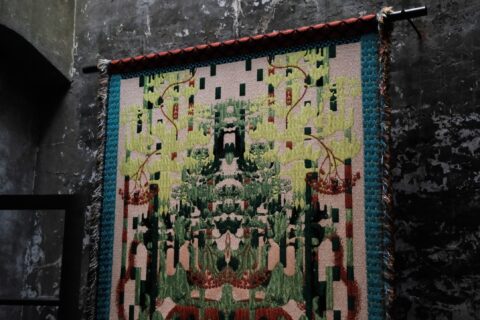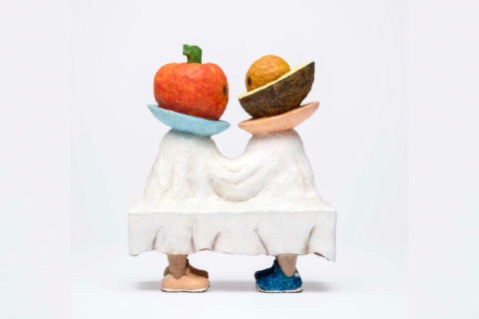傳統人手編織的毛氈有幾千年的歷史,由不同的遊牧民族編織,並使用天然染料令毛氈有愈踏愈漂亮的效果。這些毛氈上不同的圖案和錯綜複雜的設計,都是在描述民族的歷史和民間故事。受到這些毛氈所吸引,紡識品設計師Christoph Hefti幾年前開始減少時裝工作,並到尼泊爾學習傳統人手編織的毛氈,把他怪異、有趣和戲劇性的風格透過色彩繽紛和隨意拼湊的圖案,編織成奇異又夢幻的故事。
「別人說我的作品是藝術項目,對我來說是室內設計的一部分。人們喜歡我的毛氈,然後放在家中,把空間變得更有趣。」Christoph聯合著名的室內設計師Gert Voodans,把時裝店JOYCE佈置成地球上的另一個時空,火山爆發、奇異的生物和植物及世界各地的面具等,毛氈和布料上神秘又富想像力的畫面,與當季時裝放在一起,看似毫不關連,卻予人怪異中帶點和諧的感覺。
The history of hand-woven carpet can be dated back to thousands of years ago. It began with nomads who used natural dye to give their woven carpets colors that got more and more beautiful after being used. The patterns and intricate designs on the carpets are all records of the history and anecdotes of the time they were made. The textile designer Christoph Hefti was utterly enchanted by the beauty of carpet, therefore, since a couple of years ago, he has worked less on fashion-related jobs to spend more time learning the traditional skill of weaving rugs. That brought him to Nepal, where he began the journey of weaving his playfully bizarre ideas into colorful and free form patterns that tell fascinating and magical stories.
“Some would interpret my work as an art project; to me, they are simply part of the interior design. Some would appreciate my rugs. So they would bring them home to make the space more interesting.” Collaborating with the renowned interior designer Gert Voodans, Hefti transformed the fashion store JOYCE into a distanced realm. Right next to this season’s fashion items are carpets and fabrics depicting volcanic eruption, exotic animals and plants, as well as masks from around the world. The stories they are telling are mysterious and imaginative. At first glance, they may not be related to fashion, but the grotesque setup is in a way in harmony with the clothes on display.
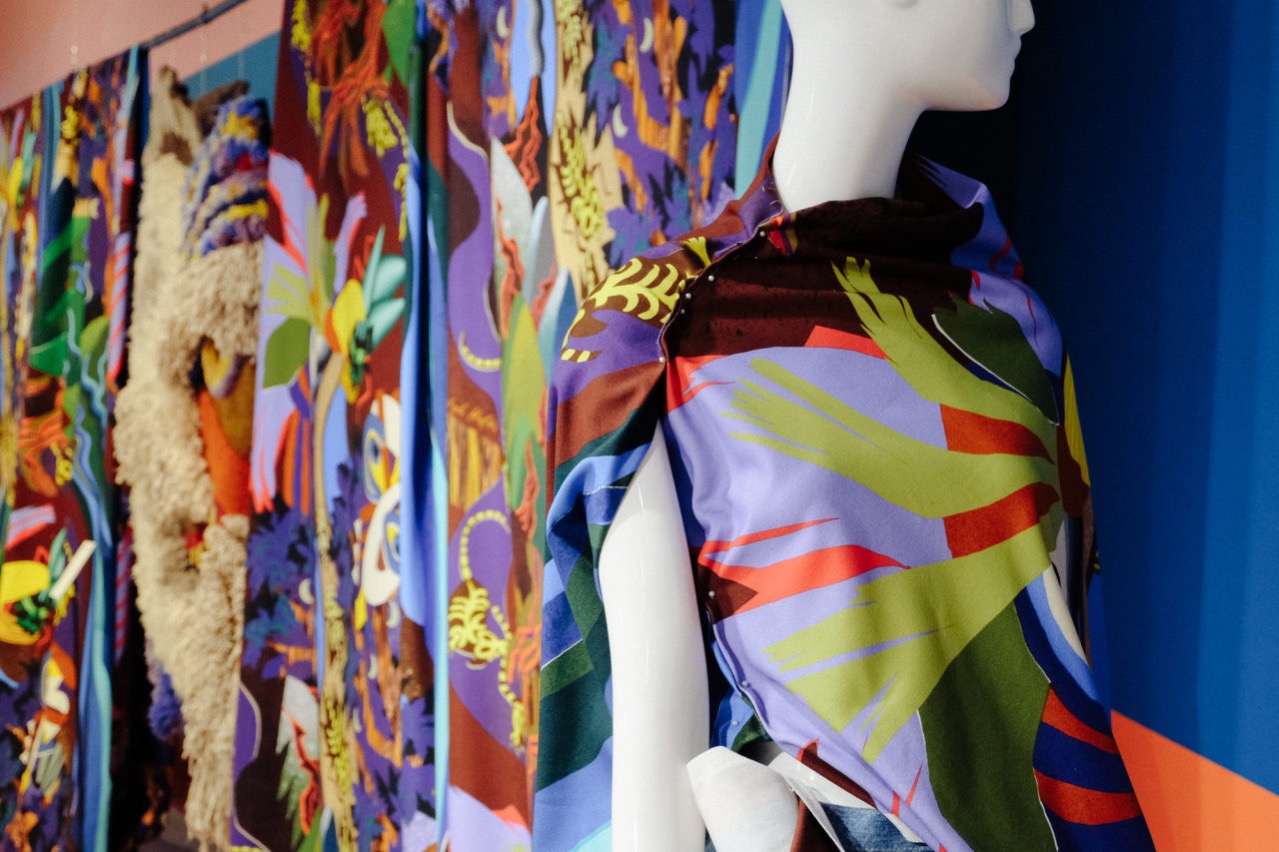
Q:可以分享今次在JOYCE舉行《The Paint We Wear》展覽的內容嗎?
A:這次展覽展出我在尼泊爾、哥倫比亞製作的地氈和於法國、意大利等製作的印花布。系列中有與尼泊爾的工匠合作、以「Mask」為主題的毛氈,結合了世界各地傳統或少數民族的面具圖案,如墨西哥各非洲等,以絲、羊毛等不同物料縫合而成。毛氈同時擁有平滑、粗糙和毛茸茸的質感,不規則的剪裁及拼貼,令成品顯得更有趣。
Q: Can you tell us something about your The Paint We Wear exhibition at JOYCE?
A: This time, I will showcase the carpet I made in Nepal and Colombia, as well as the printed fabrics I made in France, Italy and other places. In this collection, there are mask-themed rugs I made in collaboration with Nepalese artisans. We collected patterns of mask and totem from traditions and tribes around the world including Mexico and Africa, we recreated these patterns with silk, wool, and other materials. The texture of the rugs is at the same time smooth, rough and fluffy. The irregular shape and collage simply give the work a playful look.
Q:你從哪裡獲取靈感?
A:我的靈感都是從大自然裡得來的,或是來自旅行時遇到的事物,如今次展覽的一張靈感來自哥倫比亞的毛氈。幾年前在哥倫比亞旅遊,去了波哥大的黃金博物館,由於治安不好,我沒有帶電話去拍照,而是把有趣的展品都畫在筆記本裡。我把速畫下來的雕塑頭像配上我當時穿的球鞋,再加上當地很有名、煮熟後吃會產生幻覺的一種植物在旁邊;圖上兩隻豹都是吃了這種植物後所產生的幻覺。毛氈的左上角能隱約看見一個骷髏圖案,像一個鬼魂依附在毛氈上,也是我給它的一個暗號。另外,毛氈底部的幾何圖案是參考幾千年前的古老毛氈上的圖案,製造一種「毛氈在毛氈中」的感覺。
Q: Where do you get your inspiration from?
A: Nature is my greatest inspiration; sometimes I also get inspired by the experience I have when traveling, for instance, I am showing a rug inspired by my trip to Colombia I had a few years ago. When visiting the Gold Museum in Bogota, I didn’t bring my phone for photography considering the high crime rate in the country. Instead, I made sketches in my notebook to memorize the exhibits that I found interesting. I placed my sketch of a sculpture on top of the sneakers I was wearing, alongside the infamous plant that can give you hallucinations when cooked. The two jaguars on it were the hallucinations I’ve got after eating the plant. You can faintly see a skull on the top left corner of the carpet that appears like a ghost attached to it. This is also a cipher I’ve written on my design. On the back of the carpet is a geometric pattern I made based on an ancient rug from thousands of years ago. Having patterns on both sides gives this work some kind of “a rug inside of a rug” playfulness.
Q:想透過作品表達什麼?
A:我希望透過作品去說故事。自古以來,人們藉著製作毛氈去表達一些觀念與故事,如中國的古老毛氈會有龍、鳳等圖案,都是在說一些神話故事。平常的室內設計師會先考慮用什麼的布料和顏色的毛氈去配合整個空間,但我認為如果你喜歡它,你把它放在你的房間,便會令整個空間變得更有趣和有故事性。我做的毛氈和布料都是充滿象徵意義和富靈性的。
Q: What do you want to express through your work?
A: I want to tell a story through my work. Since ancient time, carpet has always been a medium to narrate a story or an idea, like how the dragon and phoenix on an old Chinese carpet tell mythology. Interior designers tend to pick carpets of certain materials and colors that match the space. But, to me, as long as you like the rug, it can turn your room into a merry place that has a story to tell. The carpets and fabrics I make have symbolic meanings, they are all spiritual.
Q:為什麼會到尼泊爾學習編織工藝?
A:尼泊爾的旅程對我來說是一場冒險,我學習到傳統手造毛氈的技術。對一個設計師來說,最重要是與工匠的溝通,把我腦海裡的想法透過工匠們的手藝實現出來。當地獨特的傳統美學為我帶來衝擊,但當中亦曾遇上很多失望與挫折。那些時候,我會坐在酒店房的床上,思考下一步該怎樣走,或是該不該跟某些人合作;這經歷對我來說是一種磨練,令我找到了我真正熱愛的事情。
Q: How did you decide to go to Nepal to learn to weave?
A: My trip to Nepal was an adventure where I learned the traditional technique of hand-woven carpet. As a designer, the foremost task is to communicate with the artisans so they can visualize my ideas with their skills. Their unique sense of aesthetics absolutely struck me, but at the same time, I did encounter disappointment and frustration. When I had those moments, I would sit in my hotel bed and think about what to do next, or ask myself whether I should work with some people. The experience I had there was a test that brought me to understand where my real passion lies.
Q:曾於Jean Paul Gaultier和Dries Van Noten等時裝品牌工作,怎樣影響你現在的創作?
A:Jean Paul Gaultier是我第一份工作,能夠在巴黎的高級時裝品牌工作對年輕的我來說,是十分難得的機會,也讓我大開眼界。後來在Dries Van Noten工作了十三年,他們給了我很大的自由度,相比在巴黎和倫敦工作,比利時的工作模式更簡單自在,更適合我。幾年前我開始想減少時裝的工作,轉而發展毛氈等家品設計。有趣的是,我創作的毛氈和布料又回到了時裝店作展覽。我好像沒有離開過時裝界一樣。
Q: You had experience working with fashion brands like Jean Paul Gaultier and Dries Van Noten. How did that influence your creative direction?
A: Jean Paul Gaultier was my first job. To a young person like I was, it was a valuable chance working with an haute couture brand in Paris. I have learned a lot from them. During my 13 years in Dries Van Noten, I was given a lot of freedom. Compared to working in Paris or London, the work pattern in Belgium is more relaxed and casual. This fits me better. A few years ago, I decided to spend less time on the fashion-related job and develop my career in carpet and other homeware design. It is so fascinating that the carpets and fabrics I designed brought me back to having an installation in a fashion store. It is as if I have never departed from the fashion world.
JOYCE G/F, New World Tower, Central, Hong Kong 28101120
